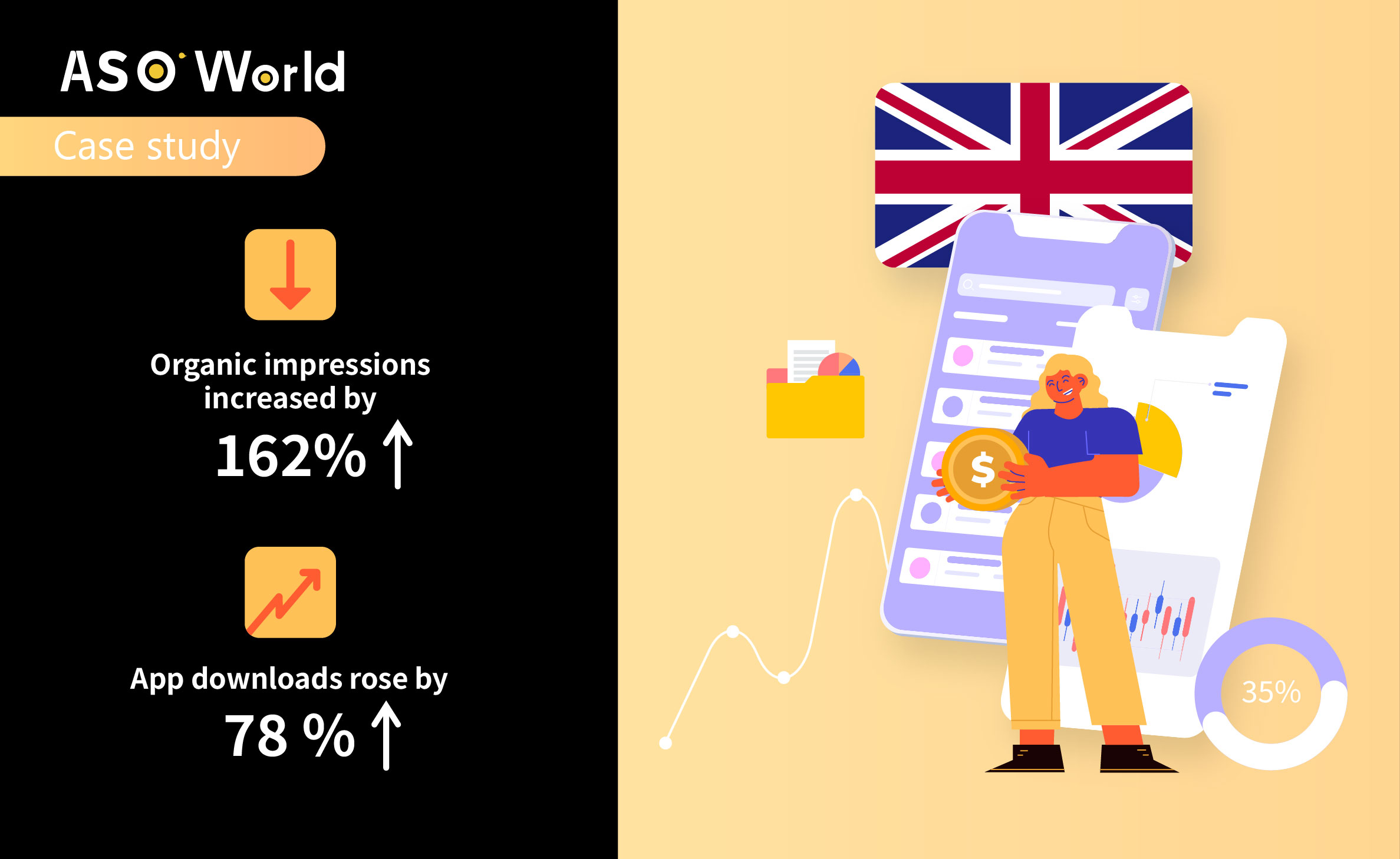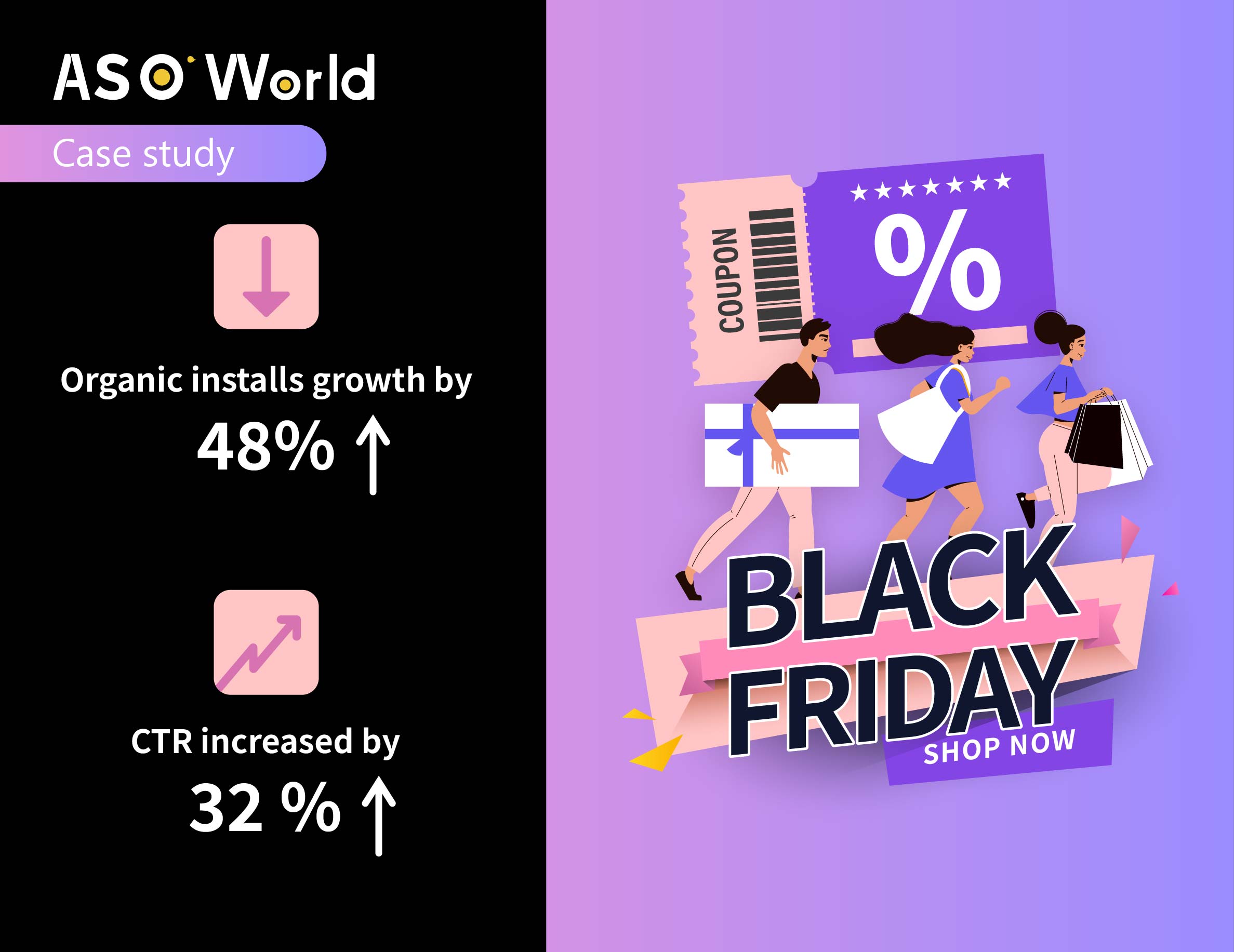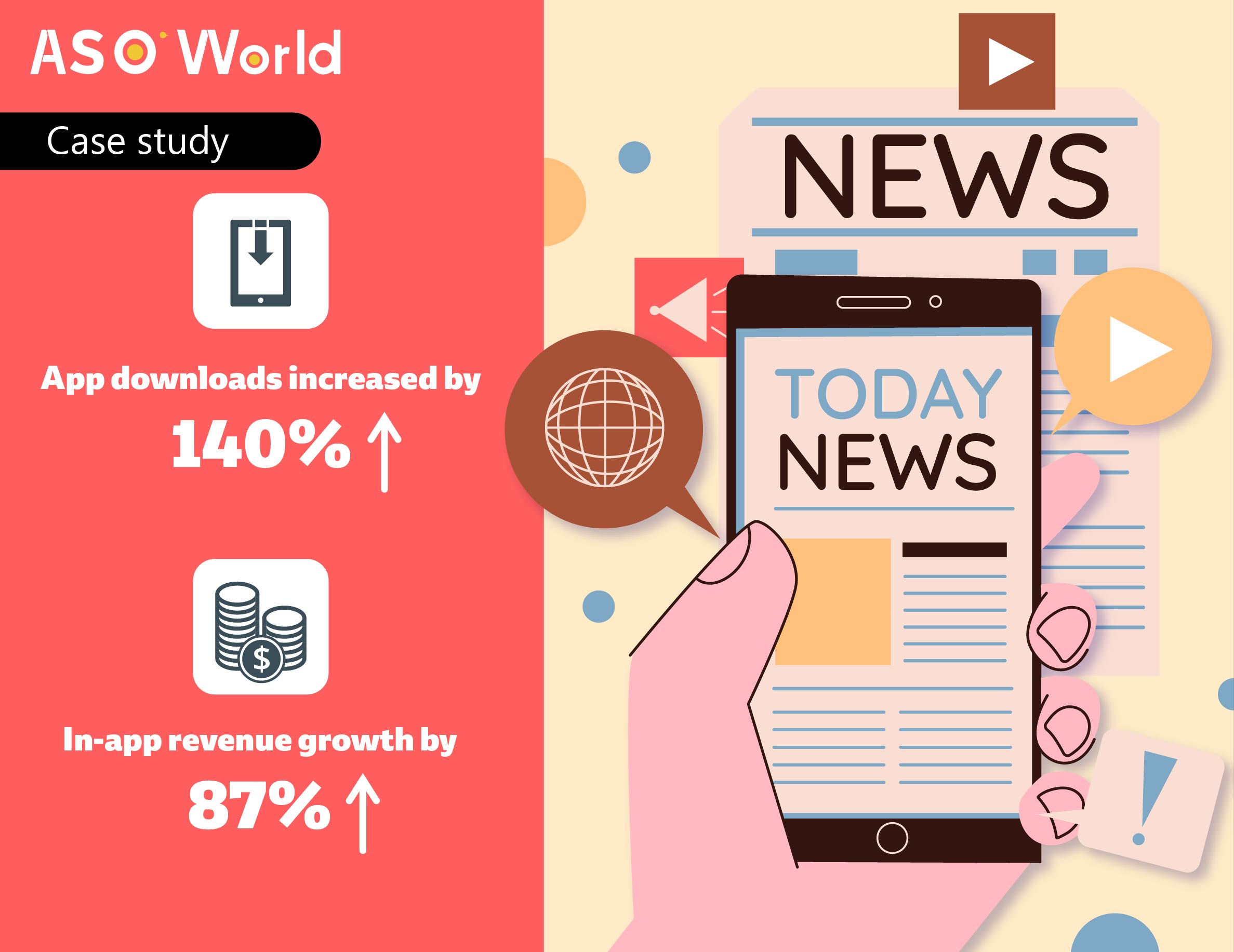
Optimization Results
- Overall keyword visibility up 185%
- Organic impressions increased 162%
- Organic downloads rose 78%
Client Profile:
A US-based FinTech developer offering a personal budgeting and expense-tracking app aimed at simplifying daily money management. The product had strong retention in its home market and sought to expand into the UK to reach users facing rising living costs, aiming to build sustainable search visibility and long-term organic acquisition.
Industry:
FinTech
ASO Services used:
Keyword Installs & ASO Service
Challenges
- Local search behavior differs from US patterns. UK users favored terms like planner and scenario-based queries (e.g., “weekly bills”) rather than some commonly used US phrasing. Directly porting US metadata yielded low relevance and weaker conversion.
- High category competition. The UK finance app category contained both established local players and global brands occupying prime keyword positions. Breaking through required a focused, data-backed approach.
- Balance between short-term ranking and long-term quality. Rapid installs could trigger visibility gains but risked attracting low-quality users; maintaining healthy retention and rating metrics was essential to preserve gains.
App Store Optimization(ASO) Solutions
The approach combined three pillars: a granular keyword tiering system, a controlled 21-day install rhythm, and concurrent metadata localization and optimization. Execution emphasized measurement and rapid iteration to protect long-term metrics while driving visibility.
Keyword research & tiering
Search behavior analysis
Conducted UK-specific queries and competitor term extraction to map genuine user language and intent. Findings showed higher CTR and conversion for planner-style keywords and scenario phrases (e.g., “groceries budgeting”, “weekly bills”).
💡 Expert tips: You can try ASOWorld's keyword research tool to compare search volumes, difficulty levels, and competitor rankings. It helps quickly spot high-value terms and uncover competitor gaps you can target.

(Example)
Related reading 👉 How to Conduct Competitive ASO Keyword Optimization Analysis
Three-tier model
Keywords were categorized by volume and intent to guide investment:
- Tier 1 (High-volume anchors): Broad high-search terms for exposure (e.g., budget planner, budget app).
- Tier 2 (Mid-volume intent): Conversion-oriented terms balancing volume and user intent (e.g., money management uk).
- Tier 3 (Long-tail boosters): Niche, low-competition phrases that deliver higher conversion at lower cost (e.g., weekly budget planner).
Per-keyword KPIs
Each keyword received target ranking windows, daily install ranges, and expected conversion/retention benchmarks to enable precise campaign control.
The 21-day phased install program
The keyword install campaign was split into three consecutive weeks with distinct goals and guardrails to drive rankings while monitoring quality signals.
💡 Expert tips:
Why is it recommended to extend the optimization cycle to 21 days? A longer optimization pace allows the algorithm to more clearly identify stable growth signals, prevents ranking fluctuations caused by short-term traffic spikes, and provides sufficient testing space across different keyword tiers — ultimately building more sustainable search weight.
Related reading 👉 How To Make Your Keyword Installs Campaigns Win The Best Performance?
Week 1 — Foundation (Indexing & Signal Building)
- Objective: Get Tier 1 keywords indexed and into Top 50–20.
- Tactics: Gradual daily installs for core terms (approx. 120–240 installs/day, ramping up to avoid triggering abnormal spikes).
- Monitoring: Twice-daily checks on ranking shifts, impressions, CTR, and D1 retention.
Week 2 — Acceleration (Push into Top Positions)
- Objective: Move Tier 1 and Tier 2 into Top 10–5.
- Tactics: Increase installs for Tier 1 to ~270–390/day concentrated during UK usage peaks (afternoon–evening). Tier 2 increased to 80–150/day to capture intent traffic. Implemented a “stability window” — once a keyword reached Top 5, maintain activity for three consecutive days to confirm the signal.
- Monitoring: Competitive activity, ranking stability, and early retention signals to avoid wasted spend on low-quality installs.
Week 3 — Stabilize & Hand off to Organic Growth
- Objective: Maintain front-page presence while reducing paid pressure.
- Tactics: Reduce maintenance installs to 40–60% of peak levels (roughly 120–180/day for core terms), scale Tier 3 activity to recover cost efficiency, and let improved metadata and organic traction sustain growth.
- Monitoring: D1/D7 retention, session length, ratings, and review sentiment; keywords showing poor quality were deprioritized and replaced.
Metadata localization and conversion optimization
While installs drove ranking signals, the metadata and visuals were optimized in parallel to improve conversion from impressions to installs and to ensure retained users.
Full UK localization
App title, subtitle, and descriptions were rewritten to include UK phrasing and scenarios (e.g., “planner”, “weekly bills”), and screenshots used GBP formatting where relevant.
Screenshot & feature messaging tests
A/B tests compared functional benefit-led visuals versus everyday-scenario creatives (e.g., household budgeting use cases); the winning set improved CTR by double-digit percentage points.
👉 Comprehensive ASO Solutions for User Acquisition
Behavioral feedback loop
Early user metrics (session duration, D1/D7 retention, rating trends) were used to refine which keywords remained primary targets; terms that attracted low-quality users were swapped for higher-intent long-tails.
Conclusion
A tightly coordinated ASO program — blending data-driven keyword tiering, controlled phased installs, and deep localization of metadata and creative assets — enabled the client to achieve rapid, sustainable entry into the UK market. The campaign translated ranking improvements into measurable business outcomes: a 185% uplift in keyword visibility, 162% more organic impressions, and a 78% increase in organic downloads. Importantly, the strategy prioritized signal stability and user quality, allowing organic performance to take over as paid support was scaled back.
 COVID-19 UPDATE
COVID-19 UPDATE 













